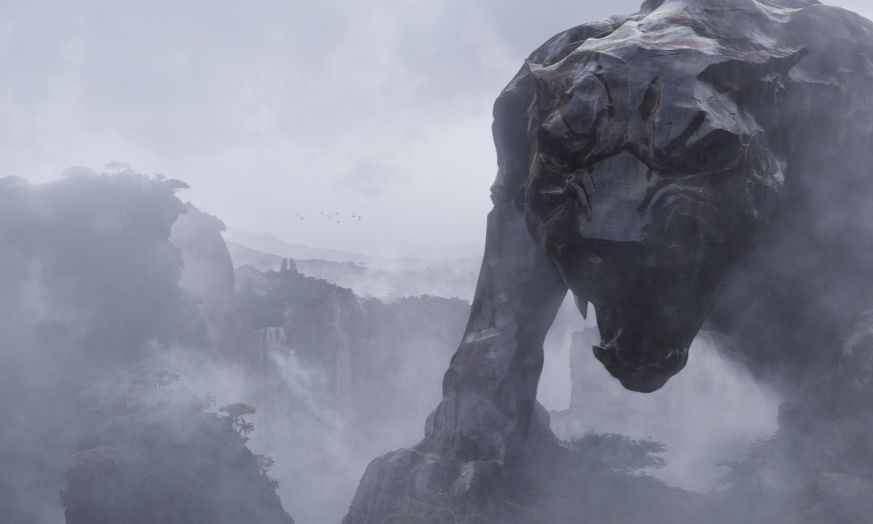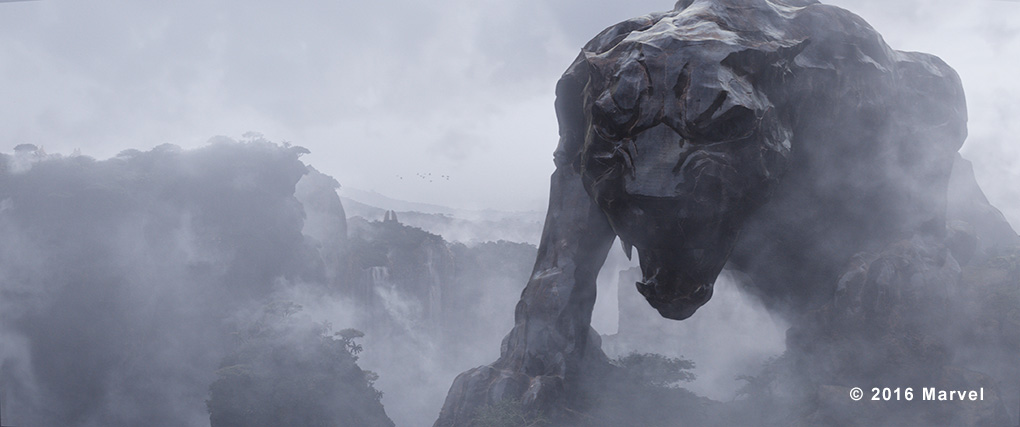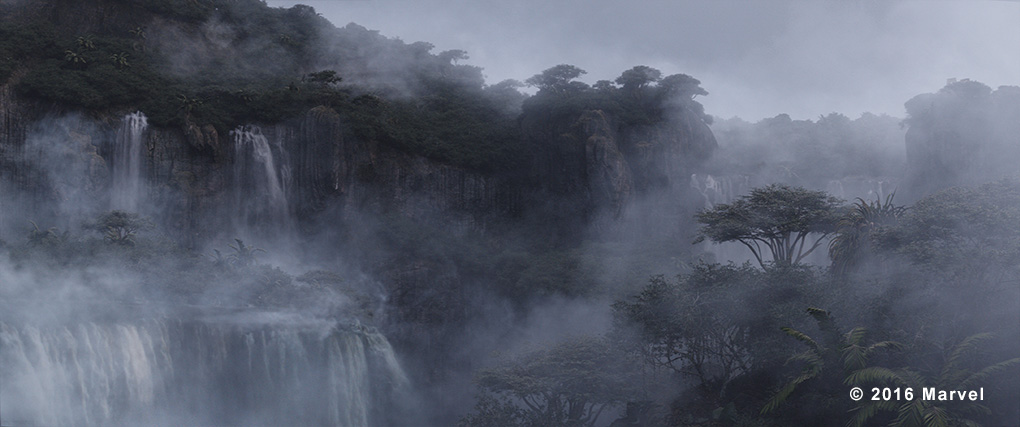Captain America: Civil War Case Study

Case Study
Image Engine was trusted by Marvel to bring the iconic nation of Wakanda to life in 'Captain America: Civil War'. Explore our VFX work in the Black Panther reveal through our in-depth case study.
Fans of the Marvel Cinematic Universe (MCU) have long enjoyed being whisked away to locations that were once confined to the pages of their favorite characters’ comic books. From Tony Stark’s laboratory to the outer reaches of Asgard, visual effects trickery has turned what was once ink on paper into glorious cinematic experience.
The latest instalment in the MCU franchise, Captain America: Civil War, has again opened the Marvel world to another famous location. Here, the audience is treated to a stunning establishing shot of Black Panther’s home nation Wakanda.
Marvel entrusted the team at Image Engine with this momentous reveal; a sneak peek that catapults the MCU into ‘Phase Three’.
Wakanda revealed
Image Engine’s visual effects for Civil War begin as Captain America (Chris Evans) and Black Panther (Chadwick Boseman) meet in the laboratory of an unknown location. The Wakanda jungle setting is soon revealed – a vast canyon featuring sheer cliffs, rock pinnacles, waterfalls, a thick jungle canopy and a monumental panther statue. The environment also evidences the existence of the metal vibranium; the material used in Black Panther’s suit and Captain America’s shield.
Not only was Image Engine tasked with crafting the Wakanda location, but the studio also had to do so relatively quickly. In fact, the team had just five weeks to work with Marvel. In that time they had to flesh out designs, model complex landforms and vegetation, and produce a final photorealistic result.
Nevertheless, Image Engine’s crew jumped on with enthusiasm, approaching the work as a true artistic partner to Marvel, directors Anthony and Joe Russo, and overall visual effects supervisor Dan Deleeuw.
“Everybody was completely on board with making changes and approaching it in a way that gave a great result,” says Image Engine visual effects supervisor Robin Hackl, who oversaw shots with associate visual effects supervisor Joao Sita.
Starting point
Image Engine launched straight into a design effort orchestrated by internal concept artist Rob Jenson.
The studio ultimately chose to create the Wakanda setting as a full-3D environment, however, rather than relying on the traditional approach of digital matte paintings. It was a smart choice, as Hackl explains: “When we took the leap of faith to go in that direction it ended up massively playing to our advantage, as the environment went through some substantial look changes.
“The concept art was this beautiful, picturesque view of God rays beaming through this sunlit valley,” notes Hackl. “Where we ended up was a very dark, misty view, with everything occluded. So by going the full 3D lit route, we were able to easily re-envision the environment in keeping with the production’s requirements.”
Sculpting perfection
Ultimately, Image Engine – led by assets supervisor Barry Poon – would generate a large array of assets. These included millions of trees and rocks alongside the panther sculpture, all completely in CG.
The sculpture, made of vibranium, proved to be one of the harder elements to produce, owing to its scale.
“If you go too polished and too refined for a sculpture it diminishes its scale,” explains Hackl. “Our lead lookdev artist Adrien Flanquart was responsible for a huge component of this shot. He established the shading characteristics and the scale of the cracks and displacements of the panther, illustrating that this sculpture was in fact 500 feet tall, not just 40 feet tall.”
Modeler Ty Shelton tackled the panther statue sculpt, generating the base structure in ZBrush and adding details such as fissures in its surface to sell the scale. Image Engine referenced the real-world element of obsidian, a volcanic glass, for the final texture of the statue. The team also provided Marvel with lookdev turntables throughout the process, enabling the production to feedback on various options as they were explored.
Expansive effects
Another challenge in creating the wider Wakanda environment was its vastness. To help deliver so much rocky terrain, for example, Image Engine relied on procedural shader-based techniques to lookdev the rock surfaces. “This enabled us to create kilometers of cliff faces, which would have been nearly impossible to texture paint individually,” says Hackl.
Complex, expansive vegetation was another requirement. Again, Image Engine used procedural methods to populate the landscape with a myriad of rainforest trees and plant life, generated in SpeedTree.
“We used some in-house tools for layout, overseen by layout artist, Cameron Widen, but the work then fell into the FX department’s hands,” says Hackl. “That involved a process of scattering instanced geometry over the top of the geometry of the cliff face itself.”
Specialized algorithms were even used to read the angles of rock faces and determine whether vegetation would ‘grow’ at certain points: “We were able to scatter points across a surface and it would ask, is it a flat surface or not?” explains Hackl. “If it was not flat, to what degree would we want a plant to grow? At a certain termination point, there would be no vegetation.”
A final consideration came in the form of the mist and fog wafting through the valley. These elements were created using substantial effects simulations: “We were counting up the individual simulations, and within the body of the shot there’s probably well over 100 different mist sims that were utilized for the varying waterfalls and mist being kicked around within the huge valley,” recalls Hackl.
Universe building
Having been assigned an important element of Captain America: Civil War, which is the gateway to the next chapter of the MCU, Image Engine’s Hackl could not be more proud of his team, especially given, he says, the enhanced scrutiny behind the Wakanda reveal.
“I’m really proud of the guys for pushing through. One of the more glowing remarks Marvel has given us is that Image Engine was really able to roll with the punches. I think that reflects throughout the entire crew.”



